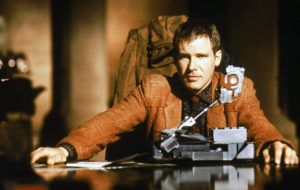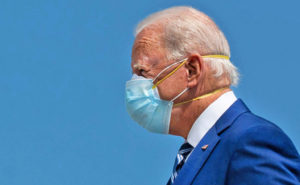“We tell ourselves stories in order to live,” wrote Joan Didion. She was referring to our conscious selves, during waking hours, but our unconscious minds also tell us stories so that we can live. This involuntary, instinctive, subconscious storytelling occurs during dreams, a phenomenon that evolved relatively late in the evolution of life, in birds and mammals.
Of the primates, humans spend the most time dreaming: 20-25% of sleep. Sigmund Freud’s probably erroneous theory that dreams are unconscious, censored, unfulfilled wishes, to be analysed and interpreted for their true meaning, has dominated culture for more than a century. But since the Sixties, many other dream purposes have been theorised, tested, and confirmed.
In newborns, dreams stimulate neurons to form networks. In children and adults, dreams rehearse coping behaviours; convert new learning and experiences into long-term memory; assist in problem-solving and creativity; maintain and update our unique identities; and allow for emotional acuity, so that we don’t slip into fear bias, viewing neutral facial expressions as menacing.
My favourite dream purpose is that dreams improve mood. Called the “mood regulatory function of dreams theory”, this covert, complex, antidepressant effect was most researched and elucidated by Rosalind Cartwright (1922-2021), a psychologist and neuroscientist known as the Queen of Dreams.
Over a period of 40 years, beginning in the Sixties, Cartwright did a series of studies on depressed people. “I wanted to study whether there is a natural healing process that could be detected in dreams,” she wrote in The Twenty-Four Hour Mind (2011). She had people sleep overnight in her lab, where she repeatedly woke and interviewed them about their dreams. She found that dreams were filled with negative, troubling material, but that they became increasingly positive throughout the night, “drawing together more and more remote associations”. By morning people felt happier, calmer, and better prepared to live.
I hadn’t heard of this auspicious purpose, which doesn’t seem to have ever been theorised before the 20th century, until I read Cartwright’s book. When we get a full night’s sleep, our minds tell us around two hours of interconnected stories over three to five dreams, cycling between NREM — non-rapid-eye-movement — and REM sleep. The process “works well only if sleep is intact, regular, and long enough to complete its nightly tasks”, wrote Cartwright. If we interrupt our mind’s storytelling, each night is like one to three disturbing, depressing, nihilistic short stories, instead of one weird, fantastical, autobiographical, ultimately uplifting novel.
Dreams also work on problems over weeks and months. Studying divorcees with untreated depression, Cartwright compared those who recovered after five months with those who did not. The dreams of the people who didn’t recover were simple and brief, with few characters and little to no emotions. The dreams of those who did recover were long and dramatic, with numerous characters and complex plots, involving many emotions, scene changes, and references to past events.
Dreams are just one benefit of sleep. In Why We Sleep (2017), self-described “sleep diplomat” Matthew Walker shared sleep’s many other benefits. Sleep maintains a healthy microbiome, balances the body’s insulin and blood sugar levels, cleans the brain, maintains healthy testosterone levels (helping us focus), protects our DNA, enhances the function of every major organ, and strengthens our immune systems.
A 2015 study, in which the cold virus was squirted up the noses of 164 people, found that 45.2% of those who’d slept an average of less than five hours the previous week became infected, as opposed to only 17.2% of those who’d slept seven or more hours. Walker wrote: “Routinely sleeping less than six or seven hours a night demolishes your immune system, more than doubling your risk of cancer.”
People who chronically under-sleep experience microsleeps, in which conscious perception — in all channels, from visual to audio — shuts down for a few seconds, often without the person knowing it. “A two-second microsleep at 30mph with a modest angle of drift can result in your vehicle transitioning entirely from one lane to the next,” wrote Walker. More car accidents are caused by “drowsy driving” like this than by alcohol and drugs combined.
Unfortunately, the sleep-deprived do not know they are operating at suboptimal levels. Studies have found that people consistently underestimate their “performance disability”, wrote Walker. The underslept do not know that if they slept a fraction more they’d be physically healthier; less depressed, anxious, irrational, and moody; less dangerous to themselves and others.
Our ancestors slept seven to eight hours a night, beginning at around 9pm, and, except in the cooler winter months, 30 to 60 minutes each afternoon, according to studies on the Gabra in Kenya, the Hadza in Tanzania, and other aboriginal groups. Some modern cultures retain this schedule, with siestas. A Harvard study done in Greece found that individuals who did not have daily naps suffered a 37% increased risk of death from heart disease.
Arguably much worse than death, lack of sleep and dreams can lead to unconscious murder of loved ones, committed while sleepwalking. A 2012 study in Neurology found that 3.6% of US adults sleepwalk, while a survey of around 5,000 people in the UK found that 2.1% had violent behaviours while asleep. Cartwright served as a sleep expert in two sleep-murder cases. In 1987, a 6’5”, insomnia-ridden man named Kenneth Parks drove 14 miles to his in-laws’ house, where he choked his father-in-law unconscious and fatally stabbed his mother-in-law. In 1997, a chronically sleep-deprived, caffeine-tablet-using man named Scott Falater stabbed his wife 44 times, rolling her body into a swimming pool.
In court, Cartwright argued that Parks and Falater were innocent. Both men were “bewilderingly motiveless”, both displayed “profound remorse”, and both were unconscious of their actions. Falater is now serving a life-sentence in Arizona, while Parks was acquitted by a Canadian court, which called his behaviour “non-insane automatism”.
We are always partly dreaming according to Cartwright. Our 24-hour minds, like our bodies, are self-healing systems, which modern society disrupts. Cartwright wrote that “most of the medications that are prescribed to relieve depression also suppress REM sleep”. Sleeping pills, Walker explained, do not provide natural sleep. Ambien produces a destructive kind of sleep, causing a 50% weakening of the synaptic connections formed during learning. Artificial lights, especially LEDs and electronic screens, disrupt the circadian rhythm.
A hundred years ago, less than 2% of Americans slept six hours or less a night; now, almost 30% do. Children are sleeping two hours fewer per night than kids 100 years ago. The problem seems worst in the US and the UK. This is good news. It means that life, for many people, can easily be improved. Mental illness and physical health problems can be alleviated night-by-night, at home, in bed.
Walker wrote that Freud made a “remarkable scientific contribution” to dream research by situating them in the mind, but that his theory of “wish fulfilment” had been rejected by modern science. Dreams are not just an epiphenomenon, nor simply a place where we try to fulfil our unconscious wishes. Dreams are “an internal psychotherapist”, wrote Cartwright.
Cartwright was “as much a pioneer in dream research” as Freud, according to Walker. Her research shows that our minds, evolved over hundreds of millions of years, are smarter, more complicated, and more caring of us than anyone ever thought.
Disclaimer
Some of the posts we share are controversial and we do not necessarily agree with them in the whole extend. Sometimes we agree with the content or part of it but we do not agree with the narration or language. Nevertheless we find them somehow interesting, valuable and/or informative or we share them, because we strongly believe in freedom of speech, free press and journalism. We strongly encourage you to have a critical approach to all the content, do your own research and analysis to build your own opinion.
We would be glad to have your feedback.
Source: UnHerd Read the original article here: https://unherd.com/






